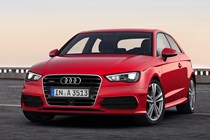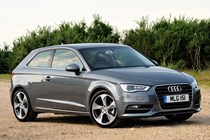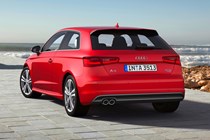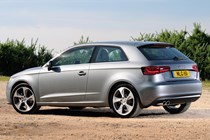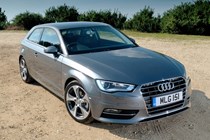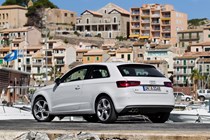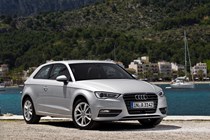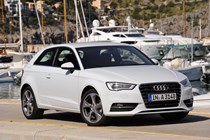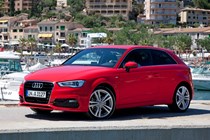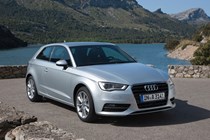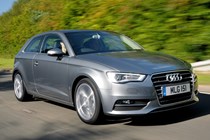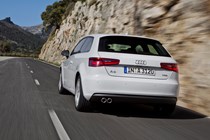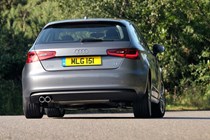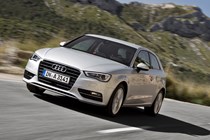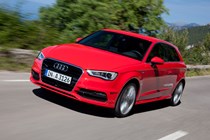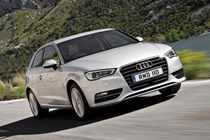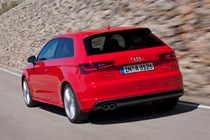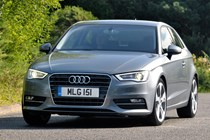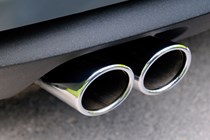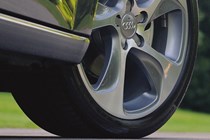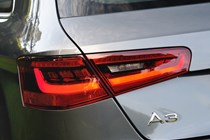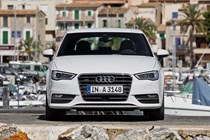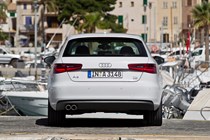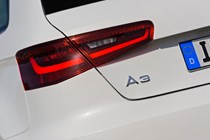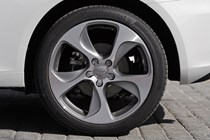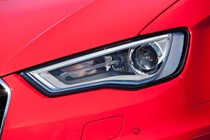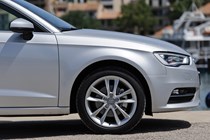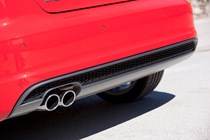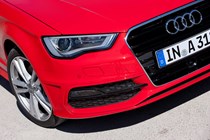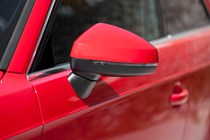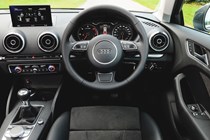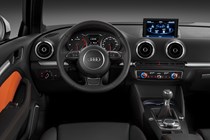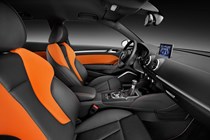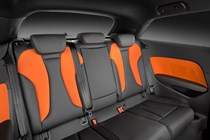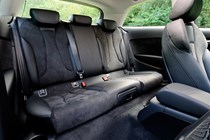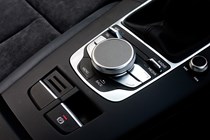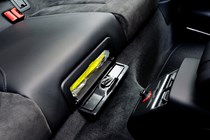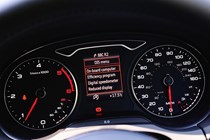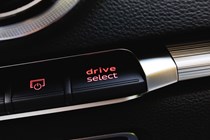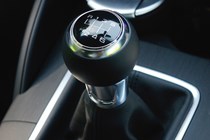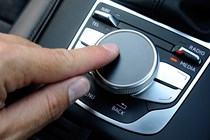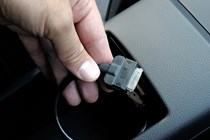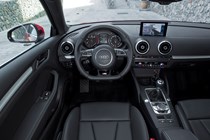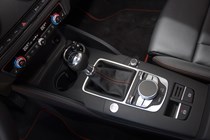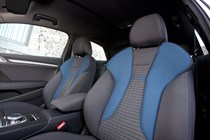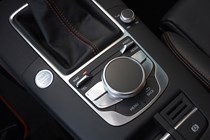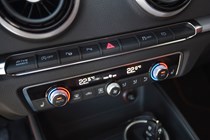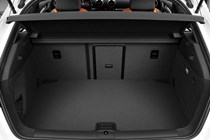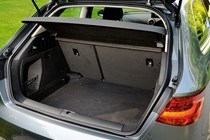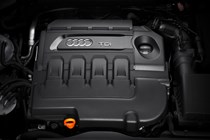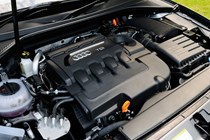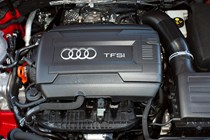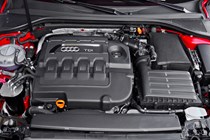Audi A3 Hatchback review
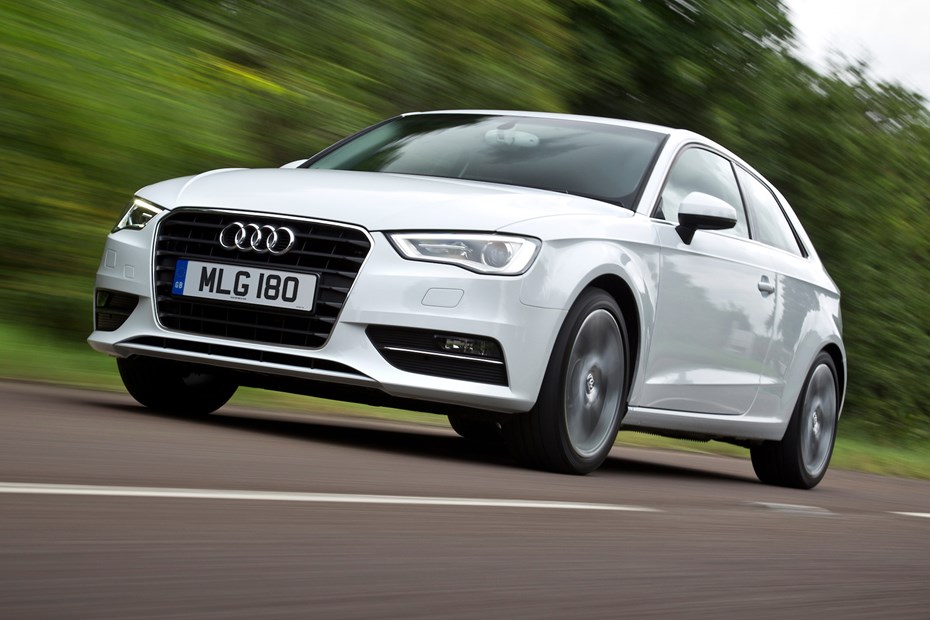
At a glance
| Price new | £18,280 - £37,500 |
|---|---|
| Used prices | £2,923 - £21,862 |
| Road tax cost | £0 - £255 |
| Insurance group | 14 - 39 |
Get an insurance quote with

|
|
| Fuel economy | Not tested to latest standards |
| Range | 484 - 913 miles |
| View full specs for a specific version | |
Available fuel types
Petrol
Diesel
Pros & cons
- Badge and brand appeal
- Strong residual values
- Wide range of trim and engines
- Expensive parts for a small hatchback
- BMW 1 Series has better steering
- Harsh S Line suspension
Audi A3 Hatchback (12-18) rivals
Overview
When Audi released the first generation A3 in 1996, it established a template for putting a premium brand on a small, luxuriously trimmed and well-equipped practical car. Rivals Mercedes and BMW tried reinventing the small car (the A-Class) or scaling down their mainstream models (1-series) and it’s telling that during the A3 Mk3’s production run they both adopted the same template.
The Audi A3 Mk3 (Typ 8V in Audi-speak) is significant for used car buyers – it’s the first model built on VW Group’s MQB platform, making it a second hand car that has lots in common with current models rather than feeling dated.
As an advanced, upmarket version of the familiar front-wheel drive family hatchback the success of the Audi A3 is easy to understand. It’s the sort of car that Ford Focus and Volkswagen Golf owners can trade up to, and Mercedes or Audi saloon drivers can downsize with, without feeling unfamiliar. Sales were strong from the off, and there’s a huge stock of used cars for sale to choose from.
Audi A3 Mk3 used buying guide
We’re looking at the 2012-2020 third-generation Audi A3 here, and it’s probably the most diverse A3 model. It was offered as a three-door hatchback first (discontinued in 2018), with the Sportback five-door and four-door saloon joining the range in 2013 and a two-door convertible from 2014. The coupé equivalent of the A3 is the Audi TT, and there’s an SUV version as well in the Q3.
An extensive range of diesel and petrol engines is available in used Audi A3s, plus S3 and RS3 high-performance versions. This generation of A3 was facelifted in 2016, gaining new headlights and tail lamps, smoother bumpers and, most significantly of all, a revised and enlarged Audi singleframe grille.
Upgraded infotainment and dashboard displays kept the A3’s high-tech feel intact even after a few years on sale, and later models offer the option of a plug-in hybrid equivalent to the VW Golf GTE – the e-Tron Sportback.
The best-selling A3 models were hatchbacks, including the five-door Sportback. That means most of the second hand Audi A3s for sale meet the needs of a small family. As a used car, the A3’s price premium over a Golf is all but lost – making this desirable used Audi temptingly affordable. Before viewing some cars, check out our top 10 tips for buying a used Audi A3 Mk3.
Audi A3 Mk3 common issues and problems to watch out for
1. Decoding the Audi A3 (Typ 8V) engine range
The A3 had a broad range of petrol engines. From 1.0-litre to 2.0-litre, producing between 110hp and 220hp, all of them are TFSI turbos. The 1.2-litre has just 105hp but it still has reasonable pulling power for the undemanding; the most popular is the 125hp 1.4-litre, which was later joined by a clever 150hp 1.4-litre ‘cylinder on demand’ (CoD) motor – two cylinders shut down during light loads to save fuel.
2018 models switched to a new naming convention with a number relating to power output rather than engine size. A 116hp 1.0-litre three-cylinder arrived (30 TFSI) when the A3 was facelifted, replacing the 1.2-litre, while the 1.4-litre CoD grew to 1.5 litres (35 TFSI).
Higher-powered engines such as the 190-220hp 40 TFSI/2.0-litre petrol are available with quattro four-wheel drive; there’s a fuel economy penalty of a few mpg. We cover the 310hp S3 in a separate review, likewise the high-performance Audi RS3.
2. Audi A3 diesel engines and ULEZ
Diesels are a 105-115hp 1.6-litre TDI (30 TDI), plus 150hp (35 TDI) and a 180hp (40 TDI) 2.0-litre. Lower-power models use a simpler ‘twist-beam’ rear axle, but anything with 150hp or more has multi-link independent suspension. You can spot the difference by looking underneath the car.
Beware 2012 to 2014 Audi A3 2.0 TDi models that claim to be ULEZ compliant. They may have met an early implementation of Euro 6 technically, but they don’t meet the emissions levels set by ULEZ. Check any prospective purchase on the TfL website.
3. Leaking water pumps
Leaking water pumps are a surprisingly common occurrence on Mk3 Audi A3. There are two giveaways: one, pools of water under the engine bay when the car’s been left for a while, and two, a ‘check coolant level’ warning in the instrument display.
The cause is due to the design of the water pump and thermostat, which are closely-coupled in a large plastic housing – the material can crack over time, leading to leaks. If left unattended, the water pump itself can fail, meaning you’ll have to buy a new water pump as well as a thermostat and housing: check carefully. While checking the coolant make sure it is the correct specification and colour – mixing coolant types can block the heater matrix or worse.
3. Diesel particulate filters
This generation of Audi A3 was fitted with a diesel particulate filter (DPF) to help the car pass ever-stricter emissions regulations. They can be problematic if a diesel has regularly been driven for short-hop trips: it doesn’t give the filter a chance to ‘regenerate’ and clean itself, so it can become blocked – which a yellow warning light on the dashboard will signify.
A long motorway blast can clean a blocked DPF, while specialists can use special procedures to clean it out. If it’s too far gone though, you’ll have to buy a new DPF – the car won’t pass its MOT otherwise.
4. Audi A3 long-life oil and service intervals
The A3 boasts electronically-controlled variable servicing. The intervals are two years or up to 19,000 miles – cars that are used more intensively will flash up the need for servicing sooner than models that have a gentle life gliding along the UK’s motorways. Because of this, it’s worth scouring the service history to make sure all the dealer or specialist stamps add up, and there hasn’t been an over-extended period between services.
Check the colour of the oil if the owner says they have been using long-life service intervals – it should be tinted green, rather than the usual brown-gold. On diesel models that is harder to verify but the service should specify if it’s been fixed-interval or variable, with oil costing more for the long life variety.
5. Audi A3 automatic – DSG maintenance
Alongside the standard manual, Audi offered the DSG dual-clutch automatic gearbox to A3 buyers. It was a popular choice, as gearshifts were smoother and snappier than ever, with an almost other-worldly ability to be in the right gear at the right time.
DSG gearboxes help to save fuel, too. They do require maintenance though – they should have fluid and filter changes every 40,000 miles. Premature wear may result if this hasn’t been carried out – feel for jerky, hesitant changes and a reluctance to pull away smoothly.
6. Audi A3 Haldex-based quattro details
A premium appeal of the Audi A3 is the opportunity to buy quattro four-wheel drive models. They have great all-weather grip so wintery conditions will hold no fear, while acceleration away from the line is more efficient, which is great fun in high-power models. There are a few things to note, though: the quattro system does need servicing every 35-40,000 miles, which can be overlooked by those maintaining their A3 on a budget.
You’ll find the boot is smaller on quattro models, due to the extra space taken up by the rear-wheel drive system. The rear suspension is also more complex, so check for uneven tyre wear and listen for clonks and rattles on bumps.
7. Interior rattles and points for wear
The A3 has a very high-quality interior with a premium finish. This is the reason many people are drawn to the Audi over mainstream alternatives. But it’s not immune from faults – early cars can suffer from a few trim rattles.
On earlier models with Audi MM!, check the central display works. The mechanism for the clever pop-up infotainment screen can get gritty with age, so make sure it works smoothly. Go over all the interior electronics to verify that they work as they should, and also check the functionality of the electronic parking brake.
8. Audi A3 diesel, 1.5 TFSI and S3 – timing belts
Diesel-engined Audi A3s, and the high-performance S3, require timing belt changes every five years or 75,000 miles. Flick through the service history to make sure this has been done – or budget for it if it’s due, because replacing an engine is much more expensive than replacing the timing belt. Audi advises the water pump is changed at the same time.
Early 1.4 TFSI engines can suffer timing chain wear – diagnostic computers can measure stretch, ears can listen for rattles. The 1.5-litre adopted a long-life timing belt but Audi UK still recommends five-year changes.
9. A3 Sportback e-Tron plug-in
Audi was early to follow the plug-in hybrid trend with the launch of the A3 Sportback e-Tron in 2014. It combines a 1.4-litre TFSI petrol engine with an electric motor, delivering a sprightly 0-62mph in 7.9 seconds. The same recipe powers the latest plug-in hybrids from Volkswagen Group, though the most direct equivalent to the A3 e-Tron is the VW Golf GTE.
As the battery has enough charge, it was first claimed to offer pure electric mode for 26-31 miles. Real world figures are closer to 20 miles – facelifted models badged 40 TSI e-Tron were given a lower rating under WLTP, but should perform just as well while getting the benefits of the updated A3 interior.
What models and trims can you buy?
Core model grades comprise SE, Sport and S line. For many, S line is the most desirable: it has the largest wheels, the lowest suspension, the beefed up bodykit and the most hip-hugging S line-branded seats inside.
Take note though: the stiffer suspension gives a firmer ride, which can be too firm for some. Audi did allow new car buyers to choose a ‘comfort’ suspension for S line models though, which is a bit more compliant. It’s worth looking out for this on the spec sheet – and taking a test drive if ride quality is important to you.
What’s the Audi A3 Mk3 like to drive?
Over the next few pages, we’ll review each aspect of the Audi A3 Mk3 three-door, taking into account its practicality, comfort, fuel economy and performance. If you’re short on time, you can also skip to our verdict page to see if we recommend the Audi A3 (Type 8V) as a good used car.



